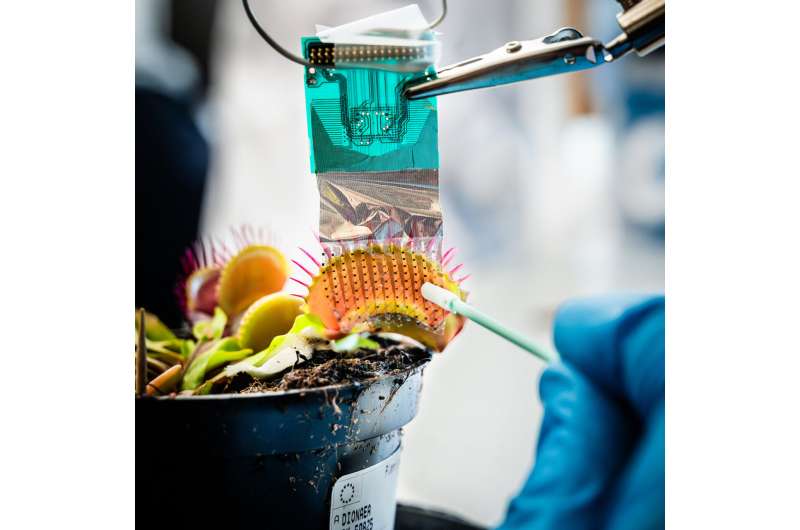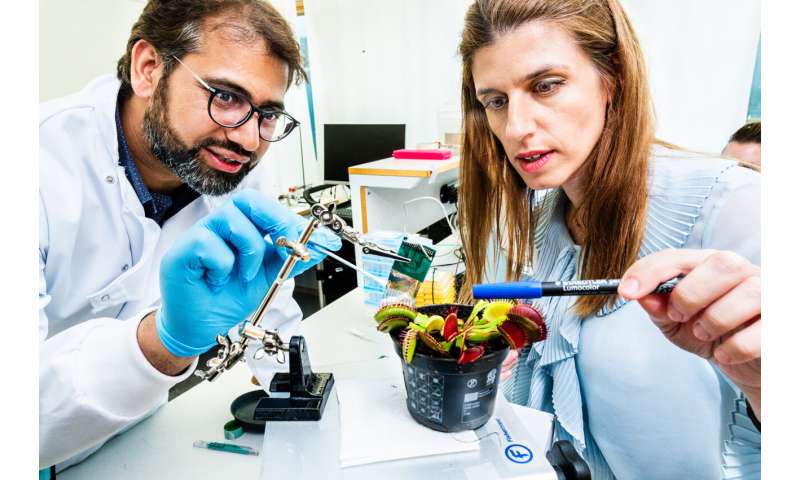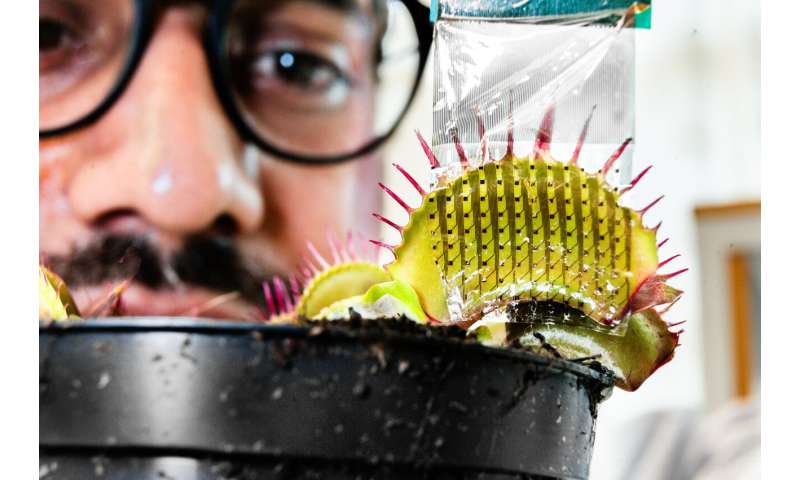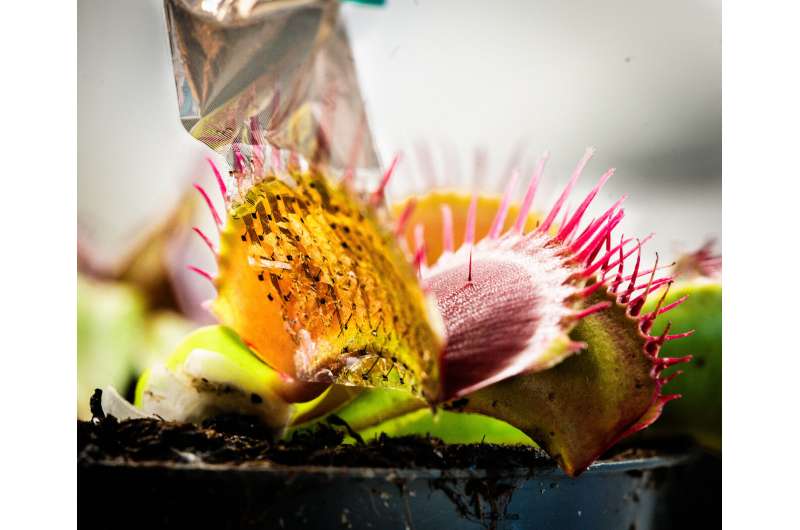
What happens inside the carnivorous plant Venus Flytrap when it catches an insect? New technology has led to discoveries about the electrical signaling that causes the trap to snap shut. Bioelectronic technology enables advanced research into how plants react to their surroundings, and to stress. The work is published in the journal Science Advances.
Most people know that the nervous system in humans and other animals sends electric impulses. But do plants also have electrical signals even though they lack a nervous system? Yes, plants have electrical signals that are generated in response to touch and stress factors, such as wounds caused by herbivores and attacks on their roots. As opposed to animals, who can move out of the way, plants must cope with stress factors where they grow.
“There is currently a great need for developing plants that are more stress resistant, for us to be able to grow food and have healthy forests also in the future. That’s why it’s important that we understand how plants respond to stress, and I think that this new technology may contribute in this area of research,” says Eleni Stavrinidou, associate professor in the Department of Science and Technology at Linköping University, Sweden, and leader of the Electronic Plants group.
It turns out that in some plants electrical signals are correlated with rapid movements. The carnivorous plant Venus Flytrap (Dionaea muscipula) is used by researchers as a model system for fast electrical signaling in plants.
The inner side of the Venus Flytrap trap has small sensory hairs. The bending of a hair, for example by an insect, may cause the trap to snap shut. The animals caught are then broken down by an enzyme in the trap, and the plant absorbs the nutrients. But for the trap to close, the sensory hairs need to be touched twice within about 30 seconds. This way, the plant can save energy by not snapping shut every time a hair is stimulated by things other than potential prey.
Electrical signaling in living organisms is based on a difference in voltage between the inside of cells and the outside environment. This difference in voltage is created when ions, i.e. electrically charged atoms, are moved between the inside and the outside of the cell. When a signal is triggered—for instance by mechanical stimulation in the form of bending a sensory hair—ions flow very fast through the cell membrane. The rapid change in voltage gives rise to an impulse that is propagated.
-

Abdul Manan Dar and Eleni Stavrinidou at Linköping University, Sweden, demonstrate how the multi-electrode array technology can be used to examine the emergence and propagation of the electrical signal in a Venus Flytrap. Credit: Thor Balkhed/Linköping University
-

The newly developed measuring device consists of a film with many electrodes in it, so thin that it can follow the curvature of the plant´s lobes. It allows researchers to measure the electrical signal in the lobe. Credit: Thor Balkhed/Linköping University
There is ample knowledge about how nerve impulses function in humans and other animals. But when it comes to plants, which do not have a nervous system, a lot remains to be discovered.
In their study, published in Science Advances, the researchers demonstrate a multi-electrode array technology that is used to examine the emergence and propagation of the electrical signal in a Venus Flytrap. This new technology was developed by researchers at Linköping University in collaboration with researchers from Columbia University, who use this technology for neuroscience studies in animals.
The newly developed measuring device consists of a very thin film with electrodes in it. As it is roughly as thin as plastic wrap used for covering food, it follows the curvature of the outside of the plant’s lobes. The researchers poked a sensory hair and, using around 30 electrodes, measured the signal in the lobe. They also filmed the plant’s movements, to be able to correlate the electrical signal with the closure of the Venus Flytrap.
In previous research most often only one measuring point was used, which did not allow for pinpointing the origin of the signal, nor its directions of propagation.
“We can now say with certainty that the electrical signal originates in the sensory hairs of the Venus Flytrap. With our technology, we can also see that the signal mainly spreads radially from the hair, without any clear direction,” says Eleni Stavrinidou.

The new measuring technology also lets the researchers discover new information.
“As we could measure signals from the entire trap, we see that signals are sometimes spontaneous and come from sensory hairs that were not stimulated. This is very interesting, and we don’t know yet why this happens or what the function is.”
“One of the most important aspects of this study is that we show that bioelectronic technologies, which are extensively used in biomedical research, can be applied to plant physiology research as well, therefore opening possibilities for new discoveries,” says Eleni Stavrinidou.
More information:
Adam Armada-Moreira et al, Plant electrophysiology with conformable organic electronics: Deciphering the propagation of Venus flytrap action potentials, Science Advances (2023). DOI: 10.1126/sciadv.adh4443. www.science.org/doi/10.1126/sciadv.adh4443
Provided by
Linköping University
Citation:
Fast electrical signals mapped in plants with new bioelectronic technology (2023, July 26)
retrieved 26 July 2023
from https://phys.org/news/2023-07-fast-electrical-bioelectronic-technology.html
This document is subject to copyright. Apart from any fair dealing for the purpose of private study or research, no
part may be reproduced without the written permission. The content is provided for information purposes only.










